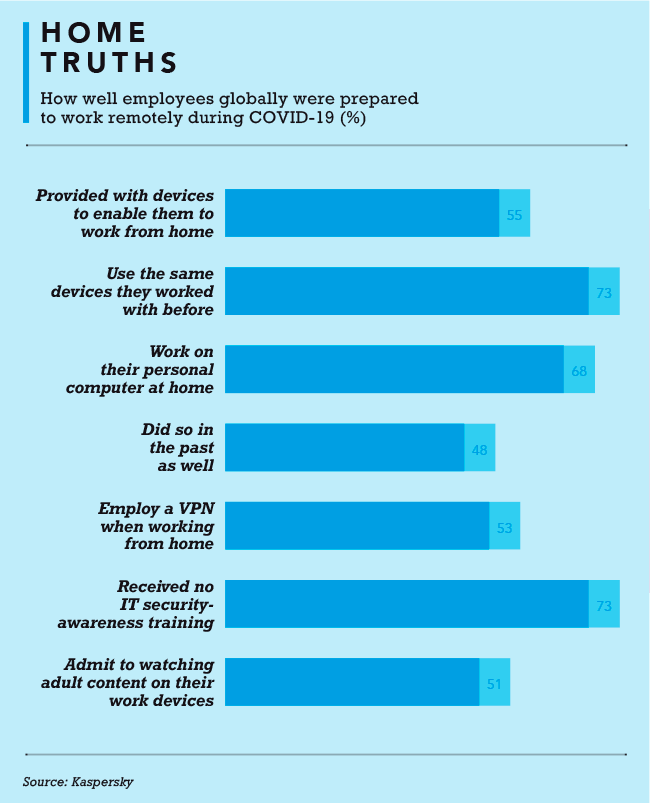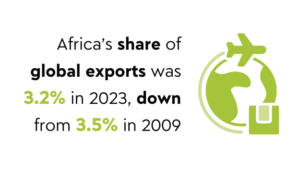If nothing else, the COVID-19 lockdown will have convinced managers and supervisors across Africa that ‘working from home’ and ‘taking a mental health day’ are not the same thing. As businesses across the continent were forced into lockdown, both employers and employees had to adjust quickly to the realities – and challenges – of what’s become known, simply, as WFH.
In the US, a CNBC/SurveyMonkey poll of 9 059 tech-industry workers found that 83% were able to work from home during lockdown, with more than a quarter (27%) saying they’d want to work from home all the time from now on, and 36% saying they wanted to work from home more often than they used to. In the UK, meanwhile, an Okta survey found that barely 25% of office workers wanted to return to the office full-time.
That tied in with the 73% of South Africans who told MyBroadband’s Working from Home 2020 Survey (conducted in April 2020) that they, too, wanted to continue working from home after the lockdown ended. You can’t blame them: about the same proportion of respondents (74%) said they felt more productive working from home.
The same three-quarters figure came out of Gartner’s survey of global CFOs and finance leaders in April, which found that, again, 74% said they wanted to move at least 5% of their previously on-site workforce to permanently remote positions post-COVID-19.

‘This data is an example of the lasting impact the current coronavirus crisis will have on the way companies do business,’ Gartner’s Alexander Bant said. ‘CFOs, already under pressure to tightly manage costs, clearly sense an opportunity to realise the cost benefits of a remote workforce. Most CFOs recognise that technology and society have evolved to make remote work more viable for a wider variety of positions than ever before.’
That’s not to say that businesses had much choice in the matter in the crazy days of March and April 2020. Consulting firm Accenture has in excess of 500 000 employees around the world (including more than 2 300 in South Africa alone). Before the COVID-19 pandemic, not even 10% of them would have worked remotely on any given day. By the middle of March 2020, as lockdowns loomed across the world, nearly every one of those employees had been sent home.
The adjustment was extreme. Accenture’s volume of video calls through Microsoft Teams exploded sixfold from 14 million to 84 million minutes per month, while audio calls tripled from an average of 350 million to 900 million minutes per month. (That, as one Accenture exec pointed out, is equivalent to about 1 700 years of continuous audio.)
For many organisations, the change came far too quickly. Caner Ahmet Aydin, a consultant at digital security company Kaspersky, shared a revealing anecdote from his home country, Turkey, during a recent webinar. As rumours of a COVID-19 lockdown started doing the rounds, many Turkish companies had to ask their staff to work remotely.
‘Unfortunately, one enterprise did not have enough laptops, because office workers mostly work on desktop computers,’ said Aydin. ‘They rushed to the market and realised that business laptop stocks were running out. There was a laptop shortage, and there were also budget concerns because it is not easy for an enterprise to prepare a budget for a thousand laptops in one day. So they let the employees carry their desktop computers – box, monitor, keyboard and peripherals – home with them. This shows the level of unpreparedness.’
Employees, too, were unprepared. A Studio Graphene survey of 900 full-time workers in the UK found that 28% of teleworking millennials had experienced regular problems with technology, while 30% said they’d faced daily problems with their internet connection. Surprisingly, given the perceived generation gap, those numbers dropped to 18% and 12% respectively for over-55s.
In the survey, 27% of people of all ages (30% of millennials; 9% of over-55s) believed their organisation should have provided more training and support to help them do their jobs efficiently from home; while 33% of millennials said they’d experienced physical aches and pains while working remotely, due to their home workstation not being suitably set up.
‘Interestingly, this research reveals a disparity between millennials and older generations when it comes to people’s acclimatisation to remote working,’ according to Studio Graphene founder Ritam Gandhi. ‘Whether it is because of less suitable or comfortable living conditions, or higher expectations of their companies, it is clear that millennials are struggling more with the change – this includes tech issues, physical pains and the need for more support. I urge businesses to step up and provide tools and training for their employees during this difficult period.

‘Importantly, they cannot treat their entire workforce the same, with each member of staff having unique needs and circumstances that they must support.’ Corporate IT departments across Africa – indeed, across the pandemic-stricken world – would be well aware of the challenges of providing tech support to colleagues who are no longer working within the containment of the company offices. The organisations that enjoyed the most seamless move to WFH tended to be those who were already using cloud-based solutions.
South African business solutions firm DAC Systems is a Microsoft Gold-certified partner and systems integrator, so its employees were already familiar with the technologies, and many were already working remotely when the pandemic hit. ‘The entire organisation runs in the cloud so, by definition, our employees can access whatever they need and have access to from anywhere on the planet and at any time,’ says DAC Systems COO Gary Regan.
‘The fact that they are sitting at home becomes almost inconsequential in that regard. The single-biggest challenge we do face from a delivery perspective is where clients have not adopted these technologies. In some instances, we assist to rapidly migrate their essential functions to these platforms, but where this is not feasible, we continue to provide support to the best of our ability where we still have remote access to the client.’
Regan adds that from an operational perspective, DAC Systems’ ability to deliver has had little to no impact as a result of the lockdown. ‘While we have had to implement certain procedural changes to allow for the management of the entire company remotely, all our work is ultimately digital in nature and as such continues unhindered,’ he says.
That’s great for DAC, but what about other businesses – such as Aydin’s Turkish example, and countless others across the region – that were thrown into lockdown, utterly unprepared, and at a few days’ notice?

The first step, obviously, is enabling remote workers at scale. Accenture in Africa CEO Vukani Mngxati says that this kind of ‘elastic collaboration’, as he calls it, requires a rapid and, in some cases, exponential expansion of the business’s current collaboration capabilities.
‘With more employees working remotely, collaboration tools must be able to immediately handle an increase in volume and load while also improving usability and productivity,’ he says. ‘Working productively from home or other remote locations requires seamless, secure, and reliable network connectivity to corporate networks, cloud assets, and to strategic partners.’
The most important thing to get right during the COVID-19 outbreak, Mngxati stresses, ‘is the protection of customers, employees and partners. This requires clearly monitoring and assessing a quickly evolving environment, making rapid business decisions, and communicating clearly and prescriptively to your people on how to navigate the situation’. But while moving quickly to enable remote workers to respond to the WFH reality is important, Mngxati says ‘you can’t do so in a way that puts your business at risk of a security breach. This means rapidly addressing your security protocols and solutions to enable the expansion of remote connectivity’.
There’s a growing sense that the temporary move to remote working may not be as temporary as some businesses might think. Mngxati sums up what many across the African business world are already thinking – and preparing for. ‘While COVID-19 is serving as the catalyst for an immediate implementation of an elastic digital workplace, the crisis will fundamentally alter how we work and engage,’ he says.
The ongoing challenge for every business, then, is to solve any lingering IT support challenges – and quickly.
By Mark van Dijk
Images: Gallo/Getty Images
















